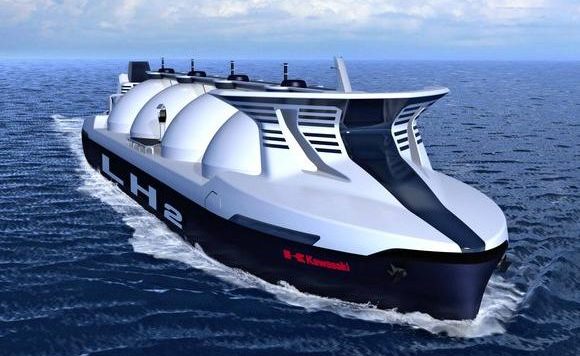Shipping’s green-tinted glasses

Another week, another shipping story discussing ships of the future being powered by this or that fuel. Each wave of discussion is making shipping so brightly green, it hurts people’s eyes. The LNG-as-a-fuel circus has moved on to hydrogen and ammonia. On the edges of the conference circuit, biofuels and methanol still get mentioned, except not as a fuel of the future. Next week, it could be pixie dust. And once that dust settles, it is not even mentioned who will undertake and finance such ahuge fleet renewal, either by breaking down all today’s vessels and building anew or retrofitting the existing fleet. After all, who cares about details like those, when we have a planet to save?
Speaking of the saveur du jour hydrogen retrofitting, are we finished yet with retrofitting the fleet with those magical green scrubbers that convert bad exhaust into even worse toxic poison pumped back into our oceans? The last time the shipping press wrote anything about scrubbers was when the conga lines of ships waiting to be fitted with that green-making magic stretched out into blue infinity.
Next week, it could be pixie dust
With hardly a peep about the scrubbers and a tidal wave of hydrogen-related articles, owners must feel like they are in a cosmic-sized vacuum, trying to get their bearings and figure out what will fuel their ships between the now and that future green ship of zero emissions. This is of course to assume that in this vacuum period no new pollution-related regulation emerges from IMO or any national environmental protection agency. Because that would mean more retrofitting grudges and more questions about the true end game in green shipping.
With the ship fuel of the future discussion devoid of a pragmatic roadmap and a sense of finality, shipowners keep asking if a combination of engineering and information technology can assure the quality of today’s fuels and their impact on engine performance. Could the fuel/engine performance efficiency, ship bunkering strategies, and rapid detection of deviations/anomalies create a basis for a greener future here and now?
Unfortunately, solving those three aspects is quite difficult, as today’s engineering and information technology found onboard ships and in fleet operation centres is as improvised and fragmented as the press discussion of the next “green” fuel. That doesn’t mean that owners don’t have any options to make their ships greener today. The following is a quick rundown of the fragments that exist today. With a bit of bother, they can be tied together and connected for the benefit of the owner and the broader green ship agenda.
It is certain that with today’s fuel, engine efficiency performance has to be consistently assured for the owner to make any investments in green.
Today, more precise performance measurements from autotuning engines fitted with better IoT sensors, flexible data collection technology, and onboard decision making technology (yes, this is the application of artificial intelligence) influence fuel burn and energy savings. The loop is closed by the decision making system adjusting the engines electronically in lieu of making manual and infrequent adjustment by the engine room staff.
The “what” gets burned is as important as the “how” it is burned.
Continuous onboard fuel composition analysis allows the landside operations centres to implement greener strategies for ship refuelling and ship routing. Equipping the ship with automated direct mass measurement system which analyses fuel composition in each tank eliminates manual soundings, makes for precise fuel quantity/quality replenishment decisions and eliminates disputes about what and how much was put in the tanks at bunkering location. Each ship loaded up with cargo and bunker sails differently in different weather conditions and presents different resistance profile. Recently, much smarter information technology solutions have arrived in the market to use all that onboard data and third party data streams to plan and optimise bunkering decisions for greener sailing.
Tying those engineering and information pieces today may be able to withstand whatever fuel transition the owners will need to make.
In the meantime, shipping needs to control its own agenda with regard to ships of the future and ship propulsion of the future. Otherwise, it will be the regulators, charterers, and bankers who will decide a green agenda for the owners. That will force many unplanned decisions on scrapping the existing vessels, investments in greener newbuilds, and modifications to fleets and ship operating practices. The sulphur reduction debate has shown how owners’ indifference resulted in an insecure and uncertain future, not to mention a total lack of clarity of what green shipping must do.
I hope owners are not waiting for the shipping conferences to restart before defining and lining up behind a clear shipowners’ green agenda.

pixie dust………….says it all about our ability to move forward and keeping the Environment at the top of the agenda.
This was probably the most cogent and pragmatic review of the frenzied position on future fuel options for shipping (and other modes of transport. The wild and largely unfounded claims for alternatives which remain to be tested in full scale operation and with a forensic economic analysis need to be tempered
Thanks Phil. I appreciate your comment.